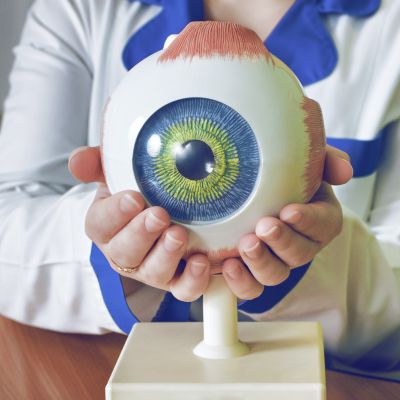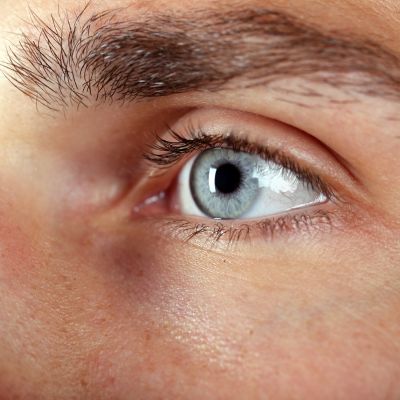
20/20 vision is more than just a buzzword; it signifies the clarity and sharpness of our sight at a standard distance. In this blog, we explore what that actually means. We’ll also look at what you can do to preserve or even improve your vision.
20/20 vision is normal visual acuity, allowing clear vision at 20 feet. Comprehensive eye exams are vital for getting and maintaining sharp vision. They also allow our team to catch eye problems early and provide necessary treatment. There are a variety of factors that affect your vision, including refractive errors, age-related changes, and eye strain.
What Is 20/20 Vision?
20/20 vision is a term used to describe normal visual acuity, representing the clarity or sharpness of vision at a standard viewing distance of 20 feet. When someone has 20/20 vision, it means they can see an object clearly at 20 feet that should normally be seen clearly at that distance.
The term “20/20” comes from the Snellen chart, developed by Dutch ophthalmologist Herman Snellen in 1862. This chart consists of letters in various sizes, and during an eye examination, a person is asked to read the letters from a distance of 20 feet. If a person can read the letters typically seen at that distance, they are said to have 20/20 vision.
If a person has better than 20/20 vision, such as 20/15, it means they can see objects at 20 feet as clearly as someone with normal 20/20 vision would see them at 15 feet. Conversely, if someone has 20/30 vision, it means they need to be 20 feet away to see an object that someone with normal vision can see from 30 feet away.
Comprehensive Eye Exams: The Key to Sharper Vision
Comprehensive eye exams are instrumental in achieving sharper vision through various means. They enable the early detection and correction of refractive errors such as hyperopia (farsightedness) myopia (nearsightedness), and astigmatism.
These issues can lead to blurry vision and eye strain. However, they can be corrected with the right prescription eyeglasses or contact lenses. They provide you with sharper and clearer vision than you would have naturally.
Comprehensive eye exams also assess the overall health of your eyes, ensuring they are functioning properly. Eye care professionals can detect conditions like dry eye syndrome, which can cause discomfort and blurry vision. By addressing these underlying problems, your visual acuity can be enhanced, leading to sharper vision.
Furthermore, eye exams aid in monitoring changes in your vision over time. As people age, their vision can change, and regular exams help track these changes. By adjusting your prescription accordingly, you can maintain the sharpest vision possible.
These in-depth eye exams help identify eye conditions and diseases that can affect your vision. This includes eyed diseases such as:
- Glaucoma
- Cataracts
- Age-related macular degeneration
Issues like these can lead to vision loss if left untreated. Comprehensive eye exams give Dr. Travis Thompson and Dr. Catherine Abbott the opportunity to catch them early. This ensures that you get the treatment you need as quickly as possible.
Finally, comprehensive eye exams offer an opportunity to discuss any vision-related concerns with your eye care provider. Whether it’s trouble focusing, difficulty seeing at night, or eye fatigue, these issues can be addressed during the exam, leading to personalized solutions that improve your visual acuity.
Learn everything you need to know about comprehensive eye exams in Knoxville, TN.
Factors That Affect Your Vision
Several factors can affect your vision, impacting the clarity and quality of what you see. They include:
- Refractive errors
- Age-related changes
- Eye diseases
- Eye strain
- Systemic health conditions
- Environmental factors
- Lifestyle changes
Refractive Errors
Conditions like nearsightedness, farsightedness, and astigmatism can distort light entering the eye, causing blurred vision.
Age-Related Changes
The lens of your eye becomes less flexible as you age. This results in presbyopia, making it difficult to focus on close objects.
Eye Diseases
Conditions such as cataracts, glaucoma, and macular degeneration can damage the eye’s structures, leading to vision loss.
Learn more about common eye diseases.
Eye Strain
Prolonged screen time, reading in poor lighting, or focusing on nearby objects for extended periods can cause eye strain and temporary blurriness.
Systemic Health Conditions
Diseases like diabetes and hypertension can affect blood vessels in the eyes, leading to vision problems.
Environmental Factors
Exposure to excessive sunlight without protection can damage the eyes, as can exposure to harmful chemicals or pollutants.
Lifestyle Choices
Poor nutrition, smoking, and lack of regular eye check-ups can impact vision health.
It’s essential to maintain good eye hygiene, protect your eyes from harmful elements, and have regular eye examinations to ensure optimal vision and detect potential issues early on.
Do you want to improve your vision? Request an appointment on our website today!
Normal visual acuity, referred to as 20/20 vision, enables clear sight at a distance of 20 feet. Comprehensive eye exams can help you to attain and preserve sharp vision. They also enable our team to identify eye issues early on and administer the required treatment. Several factors can influence your vision, such as refractive errors, age-related changes, and eye strain.
Hardin Valley Eyecare & Optical has been serving Knoxville since 2009. Located at 10904 Spring Bluff Way, you can schedule an appointment online or give us a call at (865) 888-0892.






